Young Bird Season Preparation and Season Maintenance
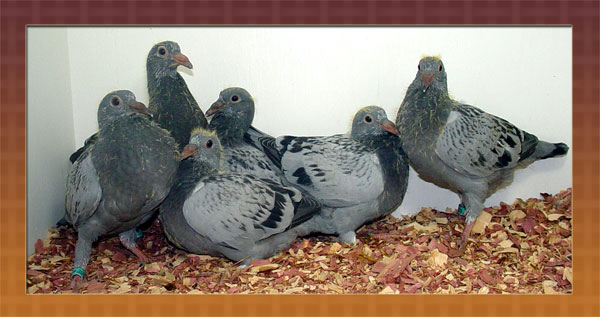 As one reads the various journals and books on pigeon racing it is easy to becomes very confused as far as putting it all together to win. Subjects such as nutrition, training, health care, motivation, ect. all seem to have as many opinions about them as you have pigeons. Many of these opinions seem to contradict each other – often between fanciers that both do exceptionally well. In short, there are many ways to successfully fly pigeons, But most of the great flyers do a lot of things in common. Over the years I have adjusted my protocol in these various areas and have finally come to a “system” that really works well for me. I will attempt in this article to tell you how I fly young birds. It may disagree with others, but it has allowed me to win 3 times Texas Center Hall of Fame and All American Index in your bird performance. I will try and do this by subject in a logical manner.
As one reads the various journals and books on pigeon racing it is easy to becomes very confused as far as putting it all together to win. Subjects such as nutrition, training, health care, motivation, ect. all seem to have as many opinions about them as you have pigeons. Many of these opinions seem to contradict each other – often between fanciers that both do exceptionally well. In short, there are many ways to successfully fly pigeons, But most of the great flyers do a lot of things in common. Over the years I have adjusted my protocol in these various areas and have finally come to a “system” that really works well for me. I will attempt in this article to tell you how I fly young birds. It may disagree with others, but it has allowed me to win 3 times Texas Center Hall of Fame and All American Index in your bird performance. I will try and do this by subject in a logical manner.
Team Selection
I try and raise 2 quick rounds of the earliest youngsters I have. This is critical for 2 reasons. First, you want them through the moult which is a big stress if they are moulting heavy during the YB season, and second, older youngsters are easier to motivate as we will mention later. I try to have a team of 40 to 50 youngsters as it is much easier for me to manage that number compared to 80 to 100 as some try to have. This is especially true when it comes to training. I will always destroy any youngster that seems unthrifty or sickly as I have yet to “nurse” one back to health that was a good racer.
Moult
Controlling the moult in youngsters is a real “key” in winning today. Youngsters that are moulting heavy in the body, head or neck just cannot come into good form during the season. By raising early youngsters this is not a problem for me since we start racing in September. Most of my youngsters are completely through the moult by the time the race season starts. This is one of the main things that all of the “light” systems do that you see advertised. They simply control the moult. In Canada as early as you fly young birds, you probably will have to use a darkening system like Mike Ganus does. I doubt you could run them through the moult quickly like John Sampson does with no more time than you have.
Motivation
This is one of the main reasons you want early youngsters. You want to motivate them, and the best motivation is sex. I simply separate my youngsters by sex during training. They never get together except shipping day at noon. As you would suspect they go crazy. When I crate them that evening many of them are in the big box perches calling to each other and obviously in love. During the race the next day they come home with one thing on their mind and trap like a dream.
Training
It is critical to train your youngsters EARLY. Soon after they start to route you need to train them out. If you raise very early youngsters and try and train them after they have quit routing, you usually lose many of them and they do poorly. The first few tosses I will let them out to exercise FIRST and then call them in with a small amount of feed. I then crate them and take them on their training toss. I do this to allow them to ” get their fly out” before I toss them. Now, however, they come straight to the house with no messing around and my losses are minimal. I personally start at 5 miles and work up to 70 or so. I always try to toss them in small groups of 5 to 10 and work in a few single tosses during this time. They then are only loft flown until 3 to 4 weeks before the season starts. I again quickly train them out to 75 miles or so and try to have several 50 to 75 mile tosses before the 1st race. We race on Saturday. My typical schedule is to loft fly the Sunday after a race. I then try and get to 40 to 50 miles 2 of the 3 days ( Monday,Tuesday and Wednesday) depending on the weather. Thursday, I take them to the clinic and single toss them out the back door as I evaluate them for shipping the next night (Friday). They are not let out Friday at all. The cocks and hens are allowed together at noon as outlined in the motivation section.
Nutrition
As I am growing my youngsters and they are moulting they need a lot of PROTEIN. They get a 16 to 18% mix during this time. Once grown and through the moult they get a 14% mix. The nutritional “trick” in my opinion in relationship to racing is to cycle your birds during the week. You can’t keep them in top form 7 days a week. You want to build toward form on shipping day. I do this by using 3 bags of grain, barley, safflower and my 14% mix. Essentially, early in the week they get a lot of barley( which they hate) and late in the week they get a lot of safflower ( which is full of fat and energy). We race on Saturday morning and this is my daily schedule.
Saturday p.m. – barley only upon return.
Sunday a.m. – barley only.
Sunday p.m./Monday a.m.- ½ barley and ½ 14% mix.
Monday p.m./Tuesday a.m.-14% mix.
Tuesday p.m./Wednesday a.m.-14% mix.
Wednesday p.m./Thursday a.m.- ¾ 14% mix and ¼ safflower.
Thursday p.m./Friday a.m.– ½ 14% mix and ½ safflower.
Shipping day they are fed about 9:00 a.m. for short races ( under 6 hours) and 12:00 noon for races over 6 hours. I will give just a handful of safflower before basketing to get them to take a big drink.
The following nutritional supplements are used:
Garlic oil-on the feed Tuesday and Wednesday. It seems to help but I have no idea why.
Dimethylglycine ( DMG) – on the feed or in the water on Wednesday , Thursday and Friday. This supplement promotes aerobic metabolism and decreases the buildup of lactic acid in the system.
L-Carnitine – on the feed or in the water Wednesday, Thursday and Friday. This facilitates the transport of fat (energy) into the mitochondria of the cell ( engine of the cell) for the production of energy.
Electrolyte Solution with Glucose-in the water on day of return from the race.
Medication/Health Maintenance
This is my schedule of medication. Before the season my youngsters are vaccinated for PMV, Pox Paratyphoid and E. coli. Three weeks before the season starts I worm them, treat them for coccidia and canker, and treat them for respiratory infection for 2 weeks. I use the following drugs.
Canker-Ridzol or Emtryl
Coccidia-Sulmet, Baycox or Amprolium
Respiratory— Tylan and a tetracycline drug (doxycycline preferably)
Worms— Ivermectin or Panacur (Fenbendazole)
If you have malaria in your area, you need to treat for 2 weeks prior to the season with atabrine. Then one day a week during the race season.
Once the season starts, I treat every Sunday p.m. Monday and Tuesday for respiratory infection. Every other week I add canker medication to the respiratory drugs, and the I don’t treat for canker I am adding drugs for coccidia. This protocol keeps all of the big performance killers under control and I never have to deal with them during the season.
There you have it, one of many ways to fly young birds. I you are unhappy with your results, give it a try as it works for me. Good luck and good flying.
Young Bird Season Preparation and Season Maintenance by: Steve Weir DVM
The Leading Online Pigeon Racing and Racing Pigeons Magazine – The Pigeon Insider

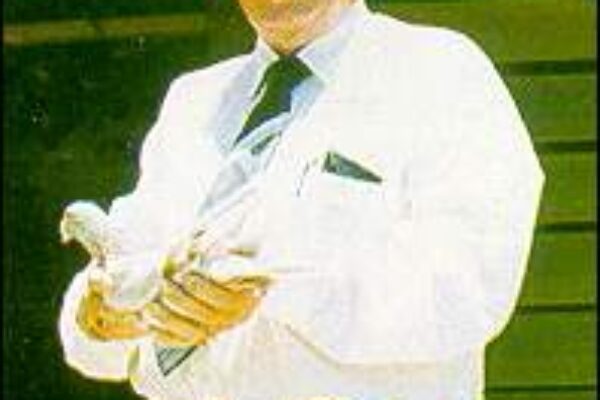
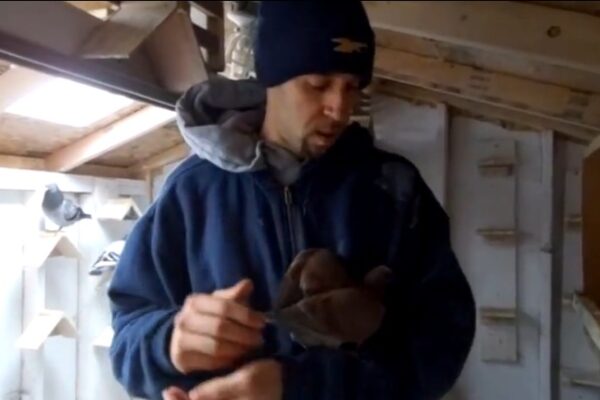

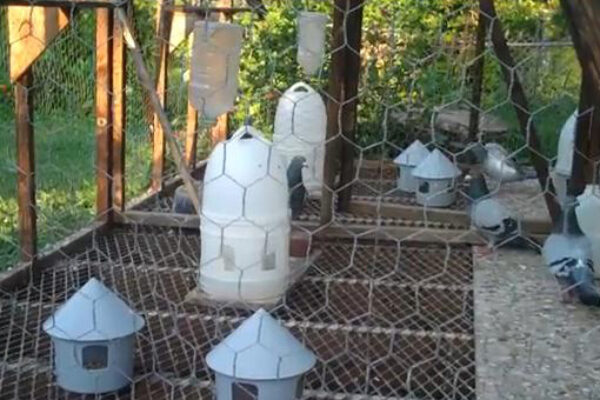
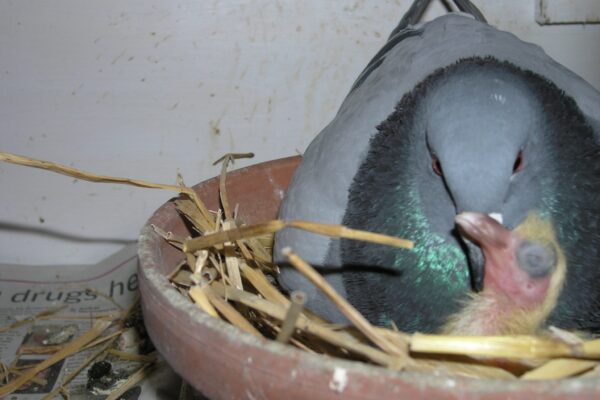
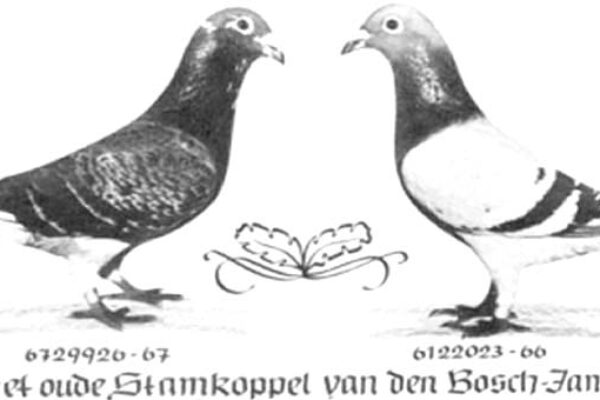


Dear All, Next to all these wise words & recommendations, all beginners in this hobby should try to have a lot of patient, to start having improvements through the years. Something like a baby who starts making his first steps in live.
This was a different way to feed and if it helps someone thats a good thing and it shows you that
no matter how long you have race pigeons you can pick up something from an article Brad.
Good article. Very similar to the feed and suppliments plan I have been using this season. Question though…. How often, and how far are you training the birds during the week. Do they get a bath? If so, what day?
As I said before, my pigeons and their young has never been sick of any sort so far. Touch wood. To me as my belated uncle, If you feed your birds with the right food for them, the adults get all their bodies need and they feed their youngsters with the same feed. Thus the youngster also get the feed it need so that his/ her little body can fight and resist all onslaught of all sorts of illnesses they can get. I’ve got 13 different seeds plus certain leaves and certain roots that get mixed with their seeds of which they get fed with all year round. I don’t have breeding, racing, summer, winter feeds at all. Never had. What the roots and leaves is concerned, I have no idea what it is called. As a young boy my uncle said the names for it, but I can’t remember the names. For the above topic it is fantastic but allot of time consuming, season watching, etc… One feeding system for me and it works for me in their health, performance, breathing, eating, muscle tone, metabolism, molting. etc… From my side I have to keep every thing of the racing pigeon loft inside and outside spotless clean via my racing pigeon loft cleaning team of 5. I use Dettol cleaning products and two 620L/min hot water jet water wash. This is done every day of the week by them. Certain things in above topic is extremely interesting for for me, but I’m sticking to what I have. Thank you for the post Chris.
hi very good artical but there is 2 things i have not heard off in Australia. DMG, L-Carnitine. So what is the same hear from Down Under ??
Brill information, i too have found that early bred youngsters go through moult before young bird racing in august/september and they certainly motivate easier, the training i always take them upto the 50 mile stage a couple of days of the week ending on a thursday for the basketing on a friday evening.
nice article been flying for 30years still learning
I really liked the artical except the maintence drugs as that in time will lesson the birds natural imune system in my way of thinking anyhow. I do well with my White Racers and my colored birds too that I train otu and I have kits of whites that train out at up to 70mph on returns from 50 to 75 miles, so I must be doing something right in not using the maintence drugs. I do however use the Garlic in the water and I also use heavy electrolites in the water after the birds return for the day or evening of return as well as the next day after the return and this works well for me. Good luck to everyone out there in this coming young bird season. God Bless one and all, Lee